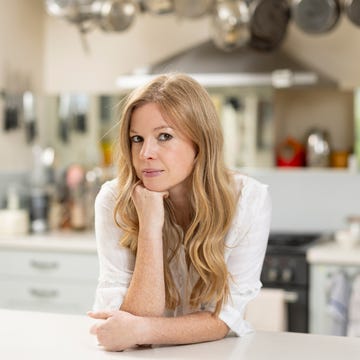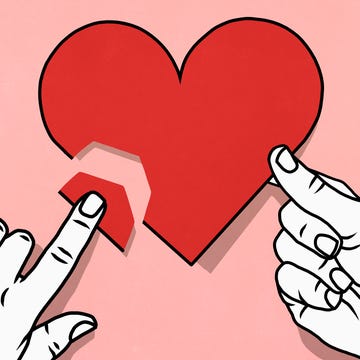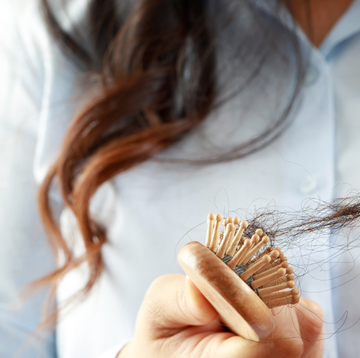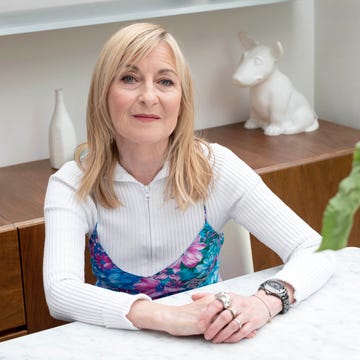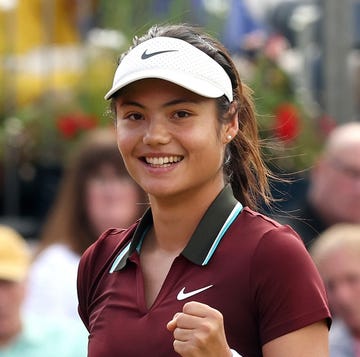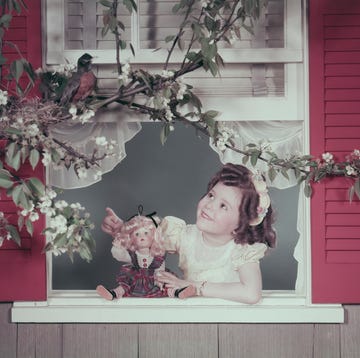In spring 2016, my then girlfriend, Claire, and I enjoyed a holiday in Italy. On a warm evening in Sirmione, one of our conversations about the future became a little more serious. As we looked ahead to one day leaving our little rented flat in London and moving somewhere we could buy a home, we discussed a dream to have children and build a family, and we made the decision to get married.
There was no proposal. No one dropped to one knee mid-conversation or anxiously pulled out a pre-purchased ring. But we were engaged. A few days later, we bought ourselves two brightly coloured glass rings from a tourist shop on the island of Murano in Venice, and wore them on that most significant finger on our left hand with silly delight. On our return to London, we chose a set of four rings together – the matching symbols of our engagement and wedding that we wear today.
Neither my wife nor I took on the pressure of creating a proposal event alone. Neither of us waited, like a character from a Jane Austen novel, to receive an offer of marriage. If we’d both followed the ‘traditional’ expectations to our gender and waited to be proposed to, we wouldn’t be married today.
What to read next
Making the decision to marry felt like a relatively easy one. Like so many couples, our motivations were romantic, personal, symbolic and intangible. And they were also pragmatic. Being married meant that Claire and I would both be legally acknowledged as the parents of our children when we were born. I was aware of the long history of marriage as something that had excluded same-sex couples and repressed women in the UK for centuries, but I was excited to take the leap with Claire. In the early years of same-sex weddings, our decision to marry seemed to have a radical edge.
As we shared the news of our engagement with friends and family, our conversations shifted from the abstract idea of getting married to the planning of how to tie the knot. With London’s high monthly rents and expensive fertility treatment on the horizon, we knew that there would be a financial sense in choosing a small ceremony or an elopement. Claire was tempted. But I realised I wanted a public celebration.
I had been a bridesmaid six times before my own wedding, and a guest at countless others. There’s a lot to love about a wedding. It’s easy to let the significant moments of our lives pass quietly, uncelebrated and unacknowledged. That wasn’t what I wanted. And there is a power and poignancy in formally celebrating and rejoicing in relationships that have long been persecuted – relationships that remain persecuted around the world today.
Our Italian engagement took place just two years after same-sex weddings became legal in England and Wales. Navigating the journey to marriage in this new territory was tricky. Waiting for the inevitable moments of misunderstandings in florists, venues and dress shops. Being asked which of us was the bride. We found ourselves correcting pronouns and dealing with cliches, meeting hesitation or over-enthusiasm, and steering through other people’s assumption.
Living in London, with families spread out across the North, choosing where to marry was not straightforward. On top of geographical considerations, I was aware that, of all the siblings in my Catholic family, I was the only one who happened to be marrying a Catholic - and the only one not allowed to marry in my family’s parish church. We settled on a small medieval hall in Hexham in Northumberland, because it’s a part of the country we love.
As we planned our wedding, we were constantly reminded that the nuptial templates that we had inherited were designed around binary ideas of what it meant to be a bride or a groom – and the expectation that both would be present. I was excited to invite family and friends to participate in our celebration, but the ‘traditional’ model of a wedding party didn’t fit. We weren’t just a groom down but also missing his best man and his ushers, and the mother and father of the groom. And we had, inevitably, duplicated ‘of-the-brides’. As Claire and I began to plan who might be best suited to greet our guests, to look after the rings, to deliver readings or speeches throughout the day, we were determined to find the right fit, irrespective of the sex of potential candidates.
We invited both of our mothers to provide short speeches at our wedding, as well as Claire’s 12-year-old nephew, her ‘best man’. There wasn’t a dry eye in the house. Having women and children deliver your speeches is a good choice if you want to move your guests to tears. Claire and I both delivered short toasts. It seems a strange contradiction that brides are so often expected to remain silent on the day described as their ‘big one’. Ten minutes before delivering my speech, I couldn’t help but anxiously wonder: ‘What the hell was I thinking?’ In that moment, I understand why so many of my female friends and relatives had taken the get-out-of-jail-free card and let themselves relax over their meal, the pressure off once the ceremony had concluded.
A same-sex wedding brought challenges – but it was liberating. The pressure of expectation eased. As congregations across the country continued to be asked, ‘Who gives this woman to be married to this man?’ neither Claire nor I were given away at our wedding. We walked into our ceremony together behind our little nieces and nephews. We had already seen each other’s dresses – we shopped for them together. Claire chose a shorter dress with Dr. Martens boots. I couldn’t resist a full-length gown and long, floaty veil.
I remember a lovely moment of nerves and excitement just before entering the packed room, full of the people we loved most in the world. It felt like the most natural thing to be going in, hand in hand, together. Neither Claire nor I changed our names following our wedding. We discussed double-barrelling them but decided to keep the names we had lived with our whole lives – conscious of both the symbolic identity we had and the practical consequences of rebranding. Across the UK today, the vast majority of brides continue to change their names, and titles, on marriage.
When my book Wedded Wife: A Feminist History Of Marriage was released last year, I began to take part in Q&A events, activities and panel discussions. The most frequently asked questions, and the most animated discussions, have consistently been around the expectation that women give up their name following their wedding. In one particularly memorable conversation, a young woman in the midst of wedding planning opened up about her desire to hold on to her name and the enormous pressure she was experiencing from all around her to change it. Another woman in the audience chipped in: ‘I’m going through a divorce. Don’t do it!’
In the years since our marriage, the customs, traditions and expectations surrounding weddings have continued to slowly evolve. In recent years I have heard more speeches delivered by brides, sisters and mothers. I attended a different-sex wedding in 2022 at which, in lieu of a giving-away ceremony for the bridge, the guests were asked as one whether we gave our love and blessing to the couple. At my own wedding, I was asked to record my father’s profession for the marriage register, the legal footprint of the day. There was no space for my mother’s. I remember standing in my dress, with Claire and our six nephews and nieces, and thinking, what would our future children record in here? In 2021, Parliament passed a law to allow all parents’ work to be recorded.
Claire and I have now been together over a decade and married for seven years. Having met in Marylebone Station and first fallen in love in London, we now live in Durham, in northeast England, with our two beautiful children. I still enjoy introducing Claire as my wife. At a time in which LGBT+ rights are being challenged and rolled back in countries around the world, it feels like my marriage gives a level of security and stability to my young family. It provides an unambiguous visibility of our family as just that – a family unit.
A decade into same-sex marriage, the UK has now seen hundreds of thousands of proposals, engagements, weddings and marriages celebrated by the same-sex couples. I grew up knowing that marriage was something between a man and a woman. With both their Mammy and Mummy, my children are growing up knowing differently.



